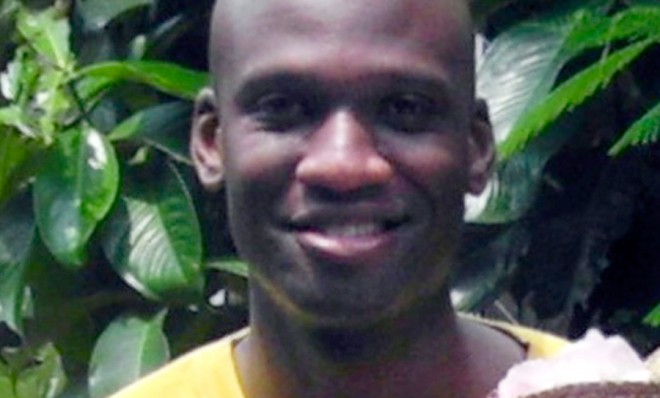Navy Yards shooter Aaron Alexis carved 'ELF' into his gun, heard voices, and other new details
With 13 people dead, officials try to piece together why Aaron Alexis went on a shooting spree

Navy Yards shooter Aaron Alexis used a valid ID to enter a military complex in Washington, D.C. and start a shooting spree that claimed the lives of 13 people, including himself. Now, new details — like carving "My ELF weapon" into his shotgun, and hearing voices — paint a picture of a man with a history of mental problems, who nevertheless managed to pass multiple background checks.
Here, five new details that have emerged about the shooter:
1. He carved strange phrases into his gun
The Week
Escape your echo chamber. Get the facts behind the news, plus analysis from multiple perspectives.

Sign up for The Week's Free Newsletters
From our morning news briefing to a weekly Good News Newsletter, get the best of The Week delivered directly to your inbox.
From our morning news briefing to a weekly Good News Newsletter, get the best of The Week delivered directly to your inbox.
Alexis apparently carved two phrases into the stock of his shotgun before going on his shooting spree: "Better off this way" and "My ELF weapon." Officials told The Washington Post that they didn't know what either phrase meant.
One possibility: ELF could stand for "extremely low frequency," which refers to electromagnetic fields with low frequencies, like those carried in power lines and household appliances.
The Navy has used extremely low frequencies in a program with the Air Force called the High Frequency Active Auroral Research Program (HAARP), an ionospheric research program often cited by conspiracy theorists as a tool used by the government to trigger natural disasters.
2. He heard voices
A free daily email with the biggest news stories of the day – and the best features from TheWeek.com
Nearly six weeks ago, according to the Los Angeles Times, Alexis told police in Rhode Island that three people were following him and using "some sort of microwave machine" to send vibrations through the ceiling and into his body, keeping him from sleeping. He also claimed that voices were speaking to him through "the walls, floor, and ceiling."
He reportedly sought mental health treatment twice at Virginia hospitals since that incident took place. The Navy and his employer claim they had no idea that Alexis was experiencing mental health problems
3. He tried and failed to buy a handgun
Federal investigators identified the gun that he used as a Remington 870 12-gauge shotgun, bought for $540 at a gun store in Newington, Va. He reportedly walked into the Navy Yard facility with the shotgun in parts and assembled it in a fourth-floor bathroom.
He tried to buy a handgun at that same store, but was denied because he had an out-of-state ID, according to the Associated Press. He also tested out an AR-15 semi-automatic rifle in the store's firing range but didn't end up buying it, a lawyer for the store claimed.
4. He was frustrated with the government
Alexis wasn't happy with his financial situation and felt, as a former Navy reservist, that he wasn't being treated well by the military, his friend told NBC News. He was "ready to move out of the country," Kristi Suthamtewkal, owner of the Thai restaurant where Alexis once worked, said, adding, "He was tired of dealing with the government."
5. He worked near the Twin Towers on Sept. 11
Soon after the shootings, it was discovered that when Alexis was arrested in Seattle in 2004 for shooting out the tires on another man's vehicle, he told Seattle police that he was present during "the tragic events of September 11, 2001" and was disturbed by them. His father told police that Alexis suffered from PTSD and that he had helped rescue people from the attack site.
Now NBC News confirms that he was working as a clerical worker at the Borough of Manhattan Community College, located near the World Trade Center, and that he had told multiple other people that he was suffering from what he saw during 9/11.
Keith Wagstaff is a staff writer at TheWeek.com covering politics and current events. He has previously written for such publications as TIME, Details, VICE, and the Village Voice.
-
 Political cartoons for January 4
Political cartoons for January 4Cartoons Sunday's political cartoons include a resolution to learn a new language, and new names in Hades and on battleships
-
 The ultimate films of 2025 by genre
The ultimate films of 2025 by genreThe Week Recommends From comedies to thrillers, documentaries to animations, 2025 featured some unforgettable film moments
-
 Political cartoons for January 3
Political cartoons for January 3Cartoons Saturday's political cartoons include citizen journalists, self-reflective AI, and Donald Trump's transparency